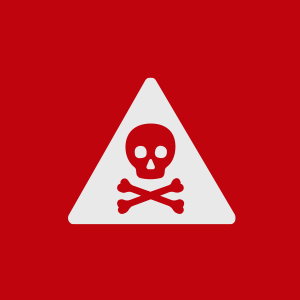View Incidents
Tarong
-

Tarong Coal Power Station releases 20,200 tonnes of sulfur dioxide
Learn moreTarong Coal Power Station reports releasing 20,200,000kg of sulfur dioxide in the year to 30 June 2018.
The Australian government links repeated or prolonged exposure to moderate concentrations of sulfur dioxide to inflammation of the respiratory tract, wheezing and lung damage. -

Tarong Coal Power Station releases 75kg of arsenic & compounds
Learn moreTarong Coal Power Station reports releasing 74.6kg of arsenic & compounds in the year to 30 June 2018.
-

Tarong Coal Power Station releases 75kg of arsenic & compounds
Learn moreTarong Coal Power Station reports releasing 74.6kg of arsenic & compounds in the year to 30 June 2018.
-

Tarong Coal Power Station releases 398 tonnes of hydrochloric acid
Learn moreTarong Coal Power Station reports releasing 398 tonnes of hydrochloric acid in the year to 30 June 2018.
-

Tarong Coal Power Station releases 54kg of mercury & compounds
Learn moreTarong Coal Power Station reports releasing 53.6kg of mercury & compounds in the year to 30 June 2018.
-

Tarong Coal Power Station releases 20,900 tonnes of oxides of nitrogen
Learn moreTarong Coal Power Station reports releasing 20,900 tonnes of oxides of nitrogen in the year to 30 June 2018.
The Australian government says people who live near coal burning power plants may be exposed to higher levels of nitrogen oxides. Even low levels of exposure can impact an individual’s eyes, nose, throat and lungs. -

Tarong Coal Power Station releases 4,740,000kg of PM10
Learn moreTarong Coal Power Station reports releasing 4,740,000kg of PM10 in the year to 30 June 2018. PM10 is small particulate matter which can cause serious health effects.
The Australian government says it has been linked to increased respiratory symptoms and premature death. -
Tarong Coal Power Stations releases 10,437,422 tonnes of CO₂ throughout the year.
Learn moreRefers to total scope 1 emissions (t CO₂-e) in the year to 30 June 2018 according to the Clean Energy Regulator.
-

Unit trip: Tarong
Learn moreA unit trip is an incident where an entire unit of a coal power station reduces its generation to zero. Source: OpenNEM, The Australia Institute
-

Unit trip: Tarong
Learn moreA unit trip is an incident where an entire unit of a coal power station reduces its generation to zero. Source: OpenNEM, The Australia Institute